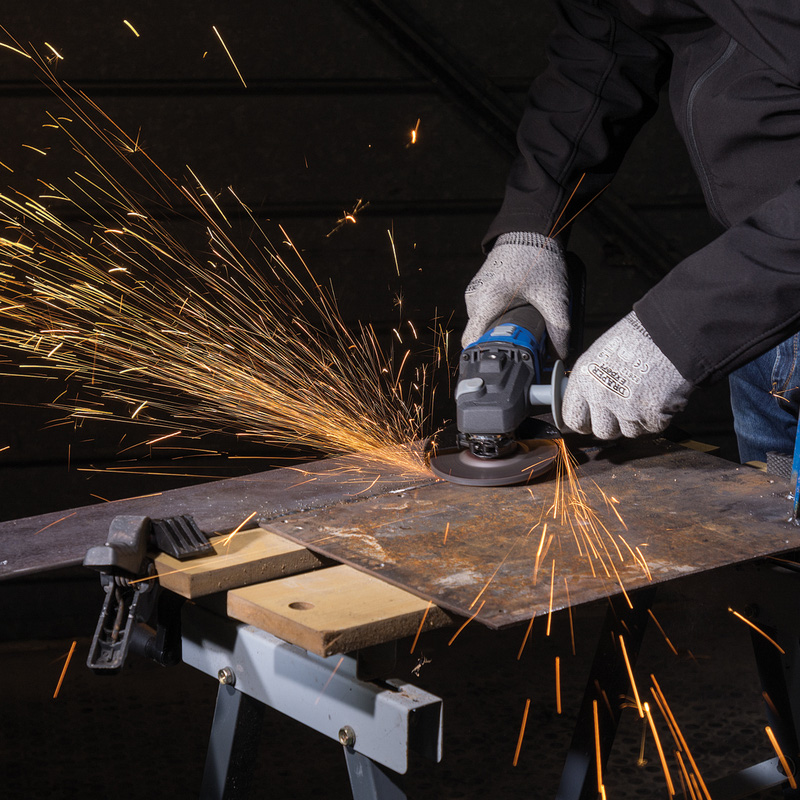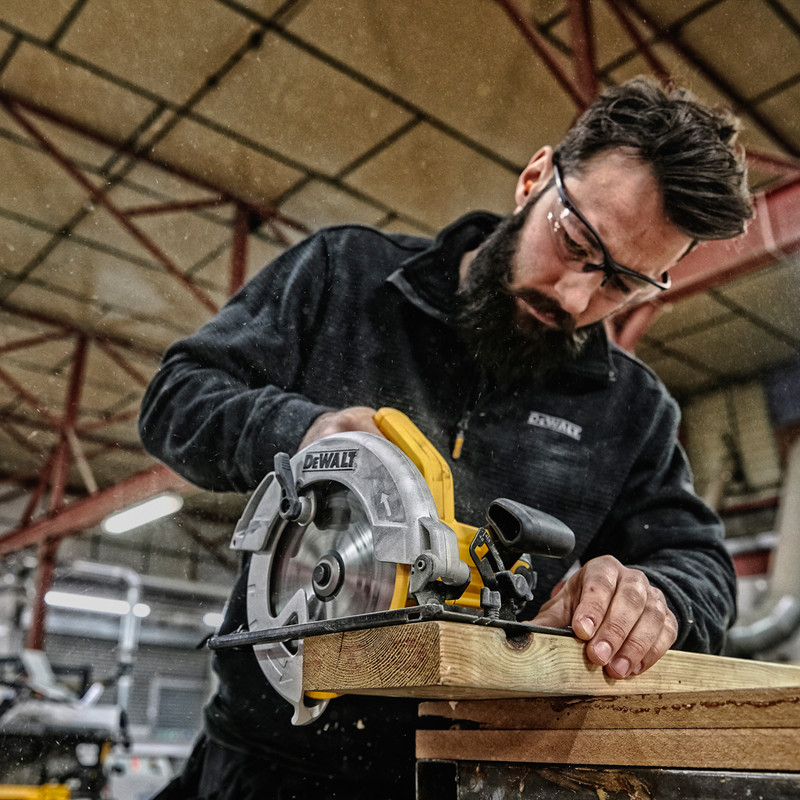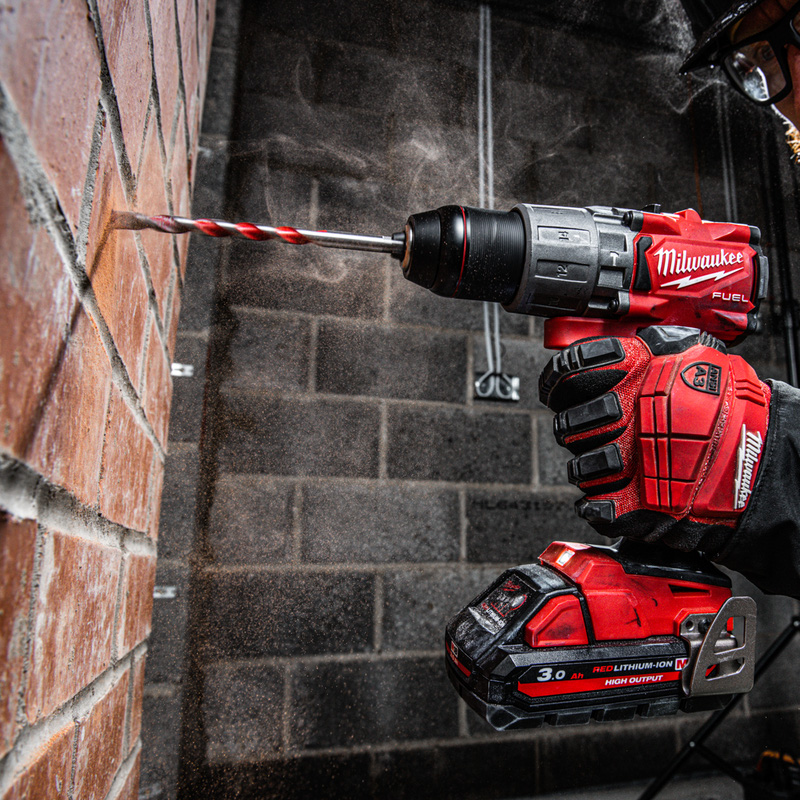Angle grinders are versatile power tools designed with a gearbox that operates a spindle at a right angle to the motor shaft. They're used for grinding and cutting tasks by attaching different discs that fit the specific angle grinder.
There are several different types of angle grinders, including three main sizes of an electric angle grinder, these are 115mm, 125mm and 230mm. The size refers to the diameter of the angle grinder disc. Pneumatic angle grinders are powerful alternatives that harness power from air stored in an air compressor.
You'll also find a variety of angle grinder discs and the one you'll need will depend on the job you're doing. These range from cleaning and preparation discs, cutting discs and grinding discs. Having a number of disc types on hand means you’ll be prepared for any diy project – just make sure they’re the right size for your angle grinder.
Types of Angle Grinders

115mm Angle Grinders
115mm electric angle grinders are relatively small-sized tools designed for use with 115mm (4 ½") diameter discs. They’re used for trimming, blade sharpening and other small-scale work that needs attention to detail.
Small, 115mm angle grinders excel when it comes to accuracy, and they’re perfect for precision tasks. They're easy to manoeuvre, relatively lightweight, and particularly valuable in situations where accuracy is important.
Advantages
-
Precise and accurate
-
Easy to manoeuvre
-
Lightweight
Things to Consider
-
Less suited to heavy duty work
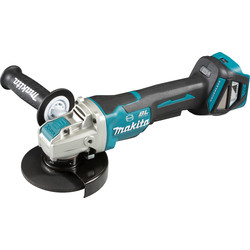
125mm Angle Grinders
125mm electric angle grinders are medium-sized tools that use 125mm (5") diameter discs. They can be used for a number of jobs, including cutting metal, grinding, deburring, sanding, and polishing.
However, it's important to note that 125mm electric angle grinders are less suited for more heavy-duty tasks that demand a significant amount of power. In such cases, larger grinders are better suited.
Advantages
-
Versatile
-
Relatively lightweight
Things to Consider
-
Less suited to heavy-duty tasks
-
Not as powerful as larger angle grinders

230mm Angle Grinders
230mm electric angle grinders are large-sized tools that use 230mm (9") diameter discs. They're commonly used by tradespeople in the construction industry for cutting dense materials and various grinding jobs. 230mm angle grinders are versatile, and also capable of deburring, sanding, and grinding down materials.
However, it's important to consider that these grinders are heavier than smaller models which can make them more difficult to operate. Also, they work at a slower speed compared to smaller angle grinders. This difference in size and speed may impact their manoeuvrability and suitability for certain tasks.
Advantages
-
High powered
-
Perfect for heavy-duty tasks
Things to Consider
-
Heavier than smaller models
-
Less suited to jobs that require precision and accuracy

Pneumatic Angle Grinders
Pneumatic angle grinders work by using air pressure supplied by an air compressor instead of relying on electricity or a battery. These tools come in various sizes, each compatible with different-sized discs. Pneumatic angle grinders are often used by welders and metalworkers for jobs that need precision in cutting and grinding.
One of the key advantages of pneumatic angle grinders is their small and lightweight design which makes them easy to handle and manoeuvre. This is especially useful in confined spaces where precision is crucial.
However, the attached air hose can make these grinders challenging to move around, which limits their mobility compared to corded or cordless alternatives.
Advantages
-
Small and lightweight
-
Easy to handle and manoeuvre
-
Good for confined spaces where precision is needed
Things to Consider
-
Attached air hose can make them difficult to move around
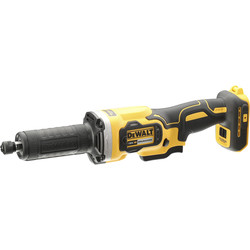
Die Grinders
Die grinders are compact, portable tools with a disc that’s parallel to the rest of the tool, and a collet for holding cutting bits. They’re mainly used when you need to access tight areas and for cleaning tasks, deburring, and widening drilled holes.
These grinders are perfect for awkward, tight areas and can be used one-handed because they’re much smaller. They’re also good for precision, ensuring that even hard-to-reach spots are effectively addressed.
However, die grinders are less powerful than larger grinders and are not able to be used for cutting jobs.
Advantages
-
Perfect for awkward, tight areas
-
Can be used one-handed
-
Ideal for precision work
Things to Consider
-
Less powerful than larger grinders
-
Can't be used for cutting jobs
Corded vs. Cordless Angle Grinders
The main difference between a corded and cordless angle grinder is how each is powered. A corded angle grinder requires an electricity supply, whereas a cordless angle grinder relies on a built-in battery for its power.
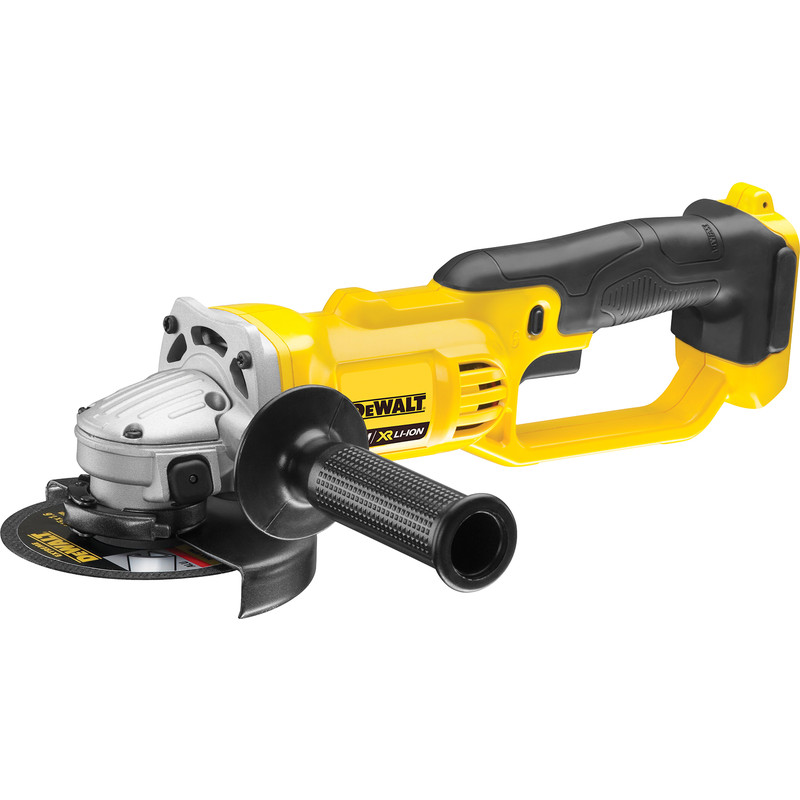
Cordless Angle Grinders
Powered by a built-in battery or attached air compressor, cordless angle grinders offer portability and are ideal for jobs where a power source is not readily available. As no power supply is needed you'll have greater freedom of movement, making it easier to get to hard-to-reach places. For long jobs, it's advisable to carry an extra battery to avoid downtime during recharging.
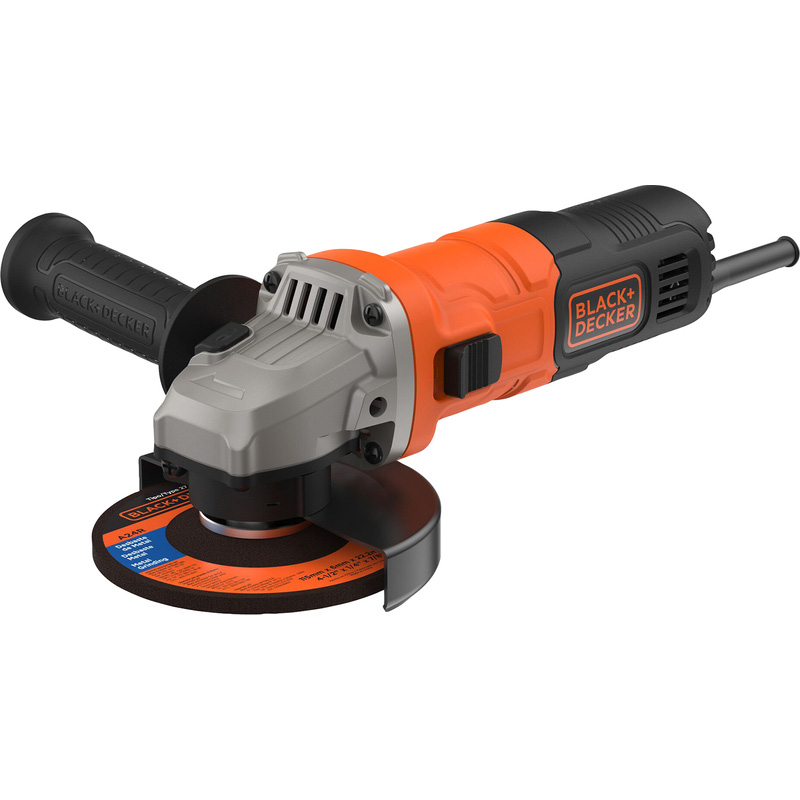
Corded Angle Grinders
Corded angle grinders draw power from the mains supply, providing consistent, high-powered torque and a reliable performance. They are convenient for tasks where mains power is always accessible. However, if you’re looking for something to take from job-to-job and you’re not sure how accessible mains electricity is, a cordless angle grinder could be a better option.
Brushed vs. Brushless Motors
Brushed Angle Grinders
Brushed angle grinders have motors that use carbon brushes to transfer current, which makes them more affordable. However, they can generate more heat and friction which may give the tool a shorter lifespan.
Brushless Angle Grinders
Brushless angle grinders have motors that have a rotating permanent magnet instead of carbon brushes, resulting in a longer lifespan, increased power and better efficiency. However, brushless angle grinders will also have a higher price point than brushed models.
Types of Angle Grinder Discs
Angle grinders can be equipped with various types of discs and other attachments, each designed for specific tasks. Make sure you choose an angle grinder disc that is the same size as your angle grinder – they will be either 115mm, 125mm or 230mm.
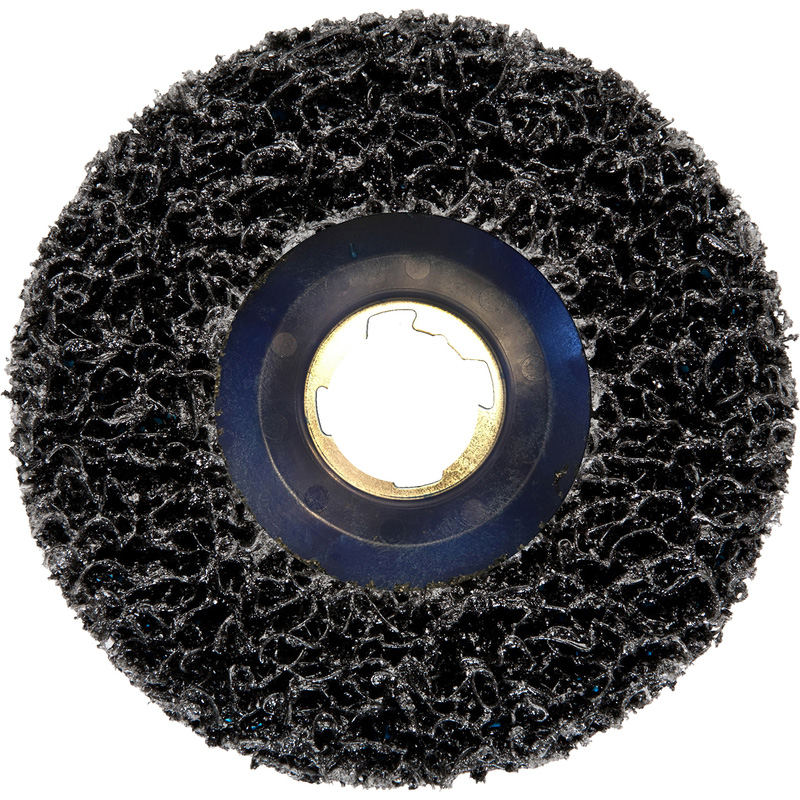
Cleaning and Preparation Discs
Cleaning and preparation grinder discs are typically used for tasks such as sanding, removing paint and rust, and surface preparation.
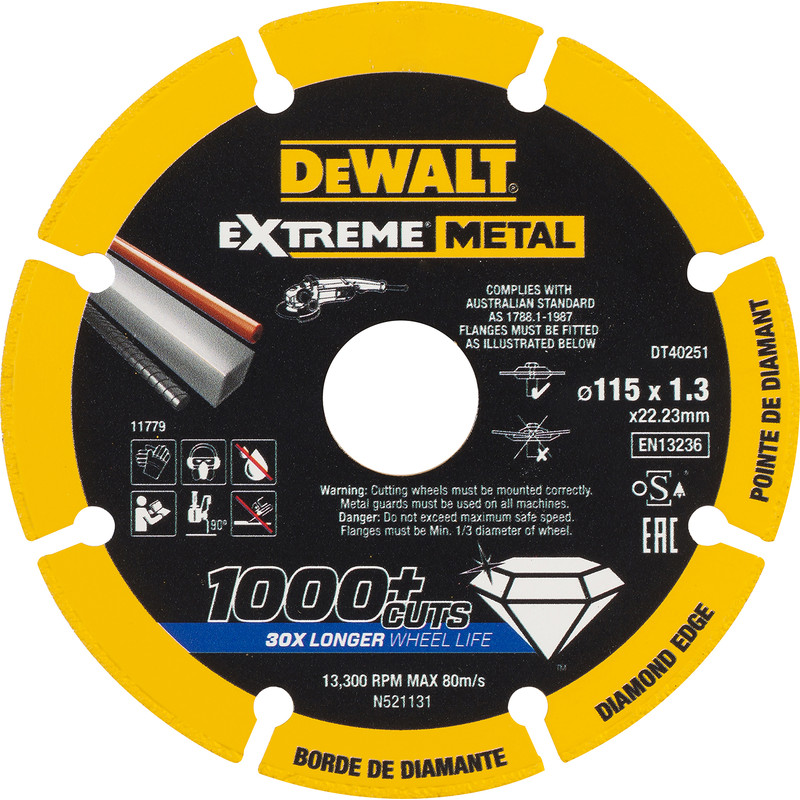
Cutting Discs
Cutting discs are designed to make fast and straight cuts on several types of material, including metal, plastic, wood, concrete, stone, ceramics, and tiles.

Flap Discs
Flap discs have an overlapping abrasive material, and they’re used for grinding and sanding metal and wood, leaving the material with a smooth finish.
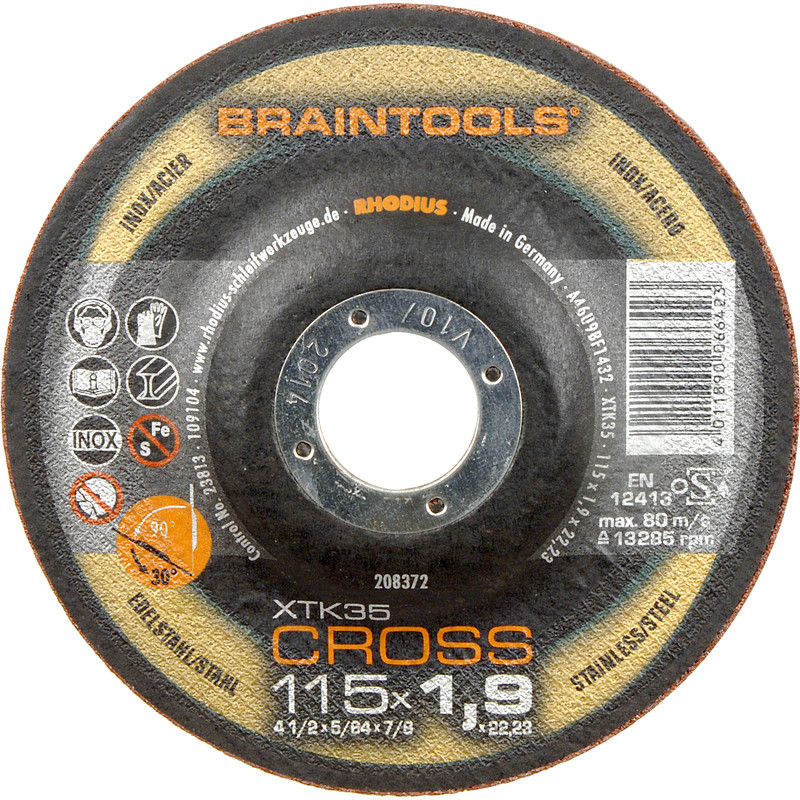
Grinding Discs
Grinding discs are used for grinding away materials, or stripping paint and rust off of surfaces. They can also be used on stone or metal surfaces.
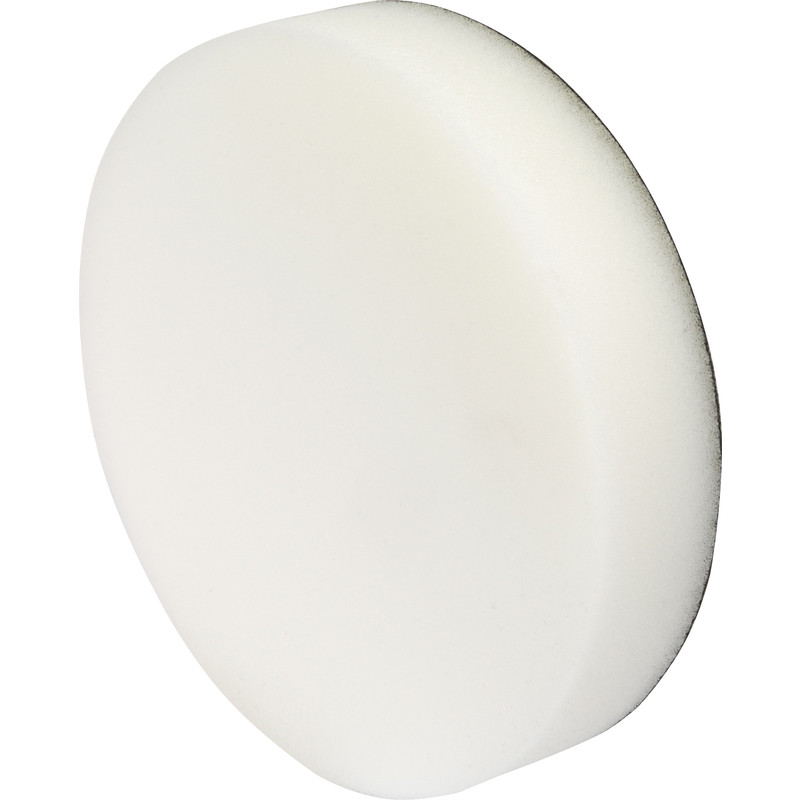
Polishing Discs
Used to polish and buff metal and paintwork, polishing discs come in different densities to suit various tasks. The stiffer and denser the polishing disc, the more aggressive it will be when polishing.
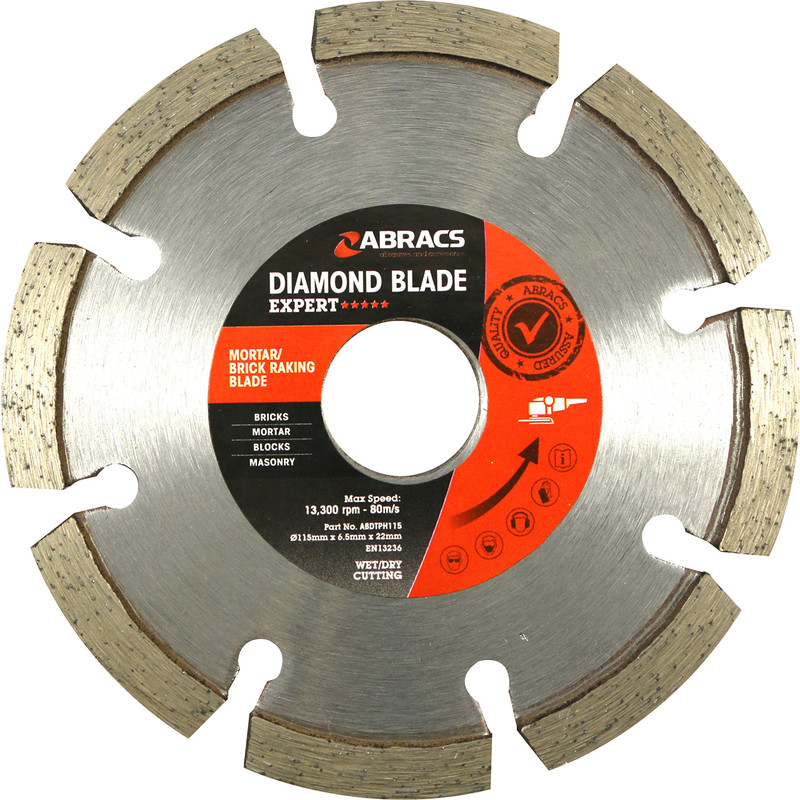
Mortar Rake Discs
Mortar rake discs or bits (similar to drill bits) are used to remove unwanted mortar from between bricks or masonry when repointing or weather proofing buildings.

Diamond Blade Discs
Diamond blade discs are common within the construction industry and make light work of cutting through tough materials like natural stone, concrete, and granite. They can also be used on certain metals including stainless steel and cast iron.
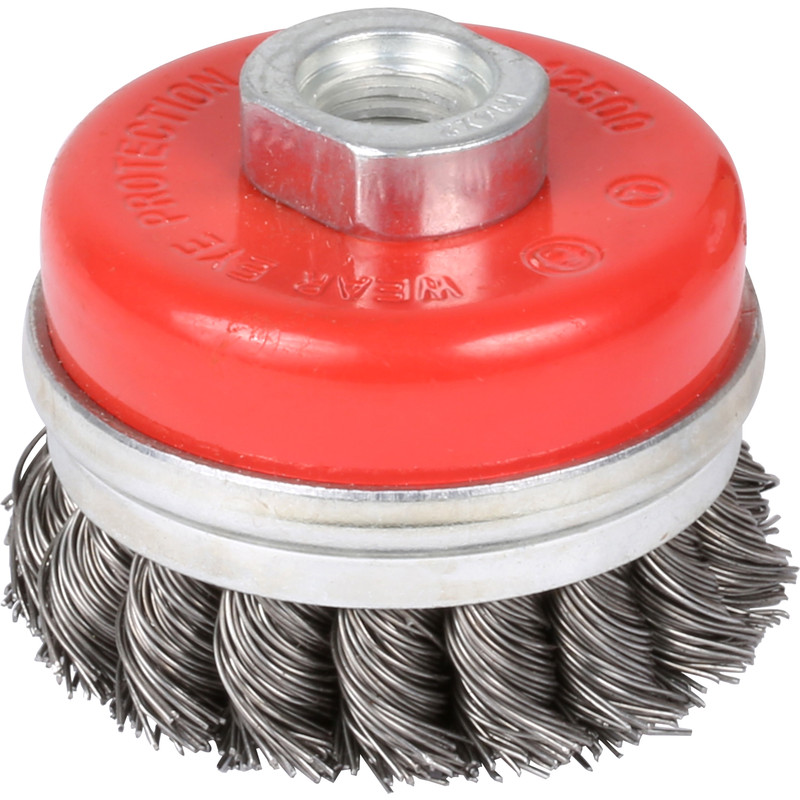
Brush Cups
Made from wire bristles of different thicknesses, brush cups are an angle grinder attachment used for things such as cleaning, deburring and paint or rust removal. Different wires offer different levels of abrasion and which you choose should depend on the type of job you're doing.
Key Angle Grinder Features
Spindle Lock
This feature locks the spindle in place to prevent it from rotating while changing the disc, making disc removal and replacement quick and easy.
Auxiliary Handle
An auxiliary handle is an additional handle attached to the side of the angle grinder for improved control during use. Auxiliary handles are removable to allow access to tight spaces and can be attached on either side to accommodate right and left-handed users.
Quick-Change Disc
Angle grinders with this feature allow for easy disc replacement without the need for a clamping nut tool, making it convenient for users who frequently switch discs during a job.
Anti-Vibration Handle
This feature reduces the amount of vibration felt through the handle, increasing comfort during prolonged use, especially in professional settings.
Optimised Coolant System
An optimised coolant system is an essential feature for prolonged use, it helps cool the engine and prevents overheating during demanding tasks.
Built-In Dampening System
This system, built into the body of the angle grinder near the rear handle, can help to reduce vibration, enhancing comfort during use – this is especially important during prolonged jobs.
Vacuum Attachment
An attachment that allows you to connect the angle grinder to a vacuum, which helps keep the work area clean and prevents the inhalation of harmful particles when cutting or grinding.
Protective Swivel Guard
All angle grinders come with a safety guard that covers up to half of the disc that's not being used for cutting or grinding. These guards may vary depending on whether the angle grinder is used for grinding or cutting.
Speed
You’ll find single-speed and variable-speed angle grinders available. Variable-speed grinders enable more delicate work by operating at lower speeds, but they are usually more expensive. Being able to set the disc at a particularly high RPM is ideal for high-precision work, and some models also come with paddle switches for enhanced control.
Wattage
The power rating of an angle grinder is indicated by its wattage, which reflects the disc size and rotation speed. Angle grinders come with power ratings ranging from 500-2500W and disc speeds between 5,000-11,000 RPM. Choosing the right power rating depends on how regularly you'll use the tool and whether it's for occasional DIY use, regular small-scale tasks, occasional large-scale work, or professional use.
Voltage
Electric angle grinders have a voltage rating, but it doesn't affect power. The main difference between 110V and 230V angle grinders is safety. A 230V angle grinder can be safely plugged into a standard domestic socket, while a 110V angle grinder can be used on construction sites, connected to an isolating transformer.
Safety Features
Safety is paramount when working with angle grinders. Several safety features can improve safety and minimise risks, including a kill switch that can stop the disc in less than 2 seconds in an emergency. Also, a disengaging system makes sure there are no sudden movements if a disc jams.

